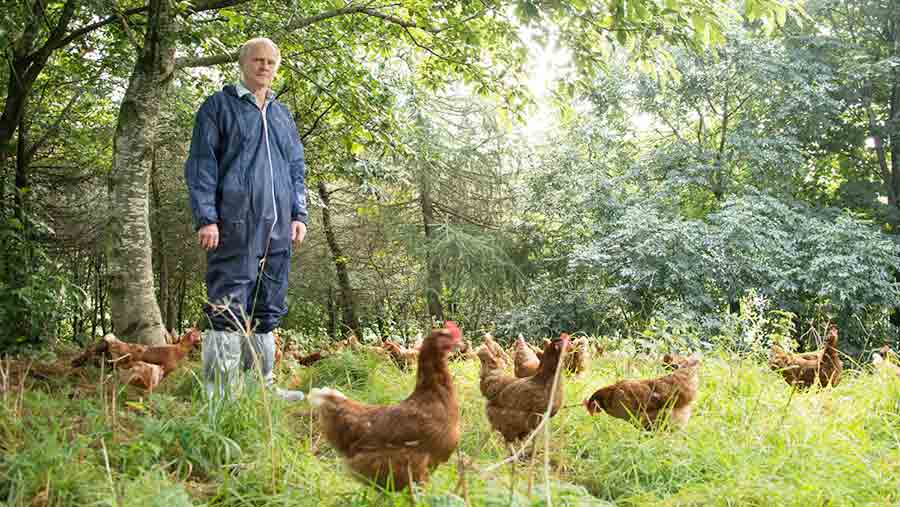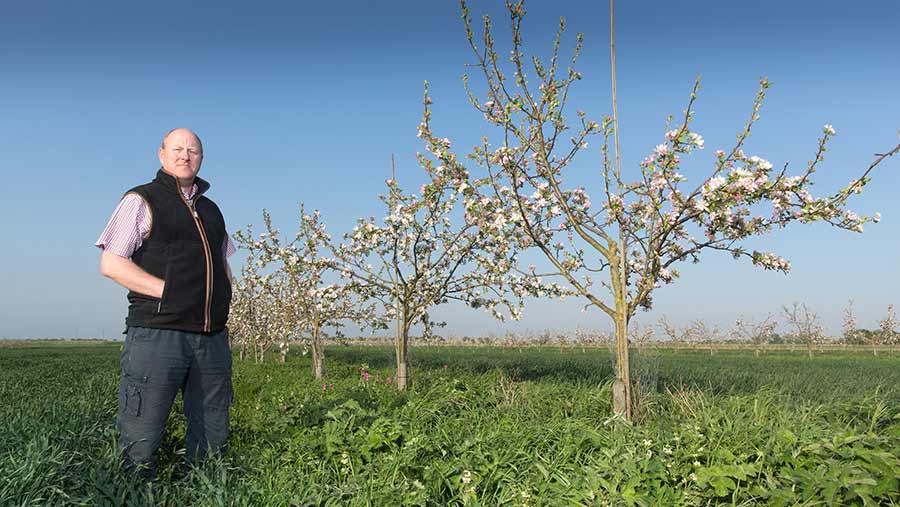Woodland Trust survey: The benefits of trees on farms
 © WTPL/Philip Formby
© WTPL/Philip Formby From improving soil quality and tackling the effects of drought to managing livestock welfare, trees have a vital role to play in building resilience in UK agriculture.
But how much do farmers really know about the benefits trees can offer? What challenges do they face in managing woodland, and what could encourage them to plant more?
In a survey of more than 1,100 farmers and farm managers, Farmers Weekly and the Woodland Trust asked for farmers’ thoughts on woodland, and what the main challenges are to future growth and development.
Disease
Almost 70% of farmers said that tree pests and disease were a significant risk to the rural landscape.
And when farmers were asked about trees on their own farms, tree disease came top of their concerns, with 20% saying that tree diseases posed a serious threat to their businesses.
See also: 9 reasons to plant trees on your land
Of the tree diseases present in the UK, ash dieback was identified as the biggest problem, with 52% of farmers saying it was already on their farm – or that they were worried it would reach them in future.
Other diseases such as acute oak decline and phytophthora were identified as problems, with 8% and 2.5% respectively saying they were concerns (see below).
While these are relatively small percentages, Helen Chesshire, Woodland Trust senior farming adviser, says the spread of diseases such as ash dieback and acute oak decline across the UK have the potential radically to alter the shape of the UK countryside.
“Farmers are right to be concerned, but this is actually an opportunity for them to evaluate how trees can work in their farming system and get advice on how to turn a potential negative into a positive,” she says.
“If no one takes action, the countryside could look radically different in 20 years. But by getting advice on the main diseases in their locality and doing some planting now, farmers can combat the potential loss by replacing trees in a way that could benefit their wider business.”
Management
Farmers may be confident in managing crops and livestock, but knowing how to manage trees properly was one of the biggest worries for those questioned in the survey.
Some 16% said maintenance and management of trees and woodland was a significant concern to their business. How to deal with deer and squirrel damage and knowing what tree varieties to plant – and where to plant them – were common issues.
One respondent said they knew their woodland needed proper management, but reported that it was simply “left to its own devices”; others were concerned about fast-growing species that they didn’t know how to deal with properly.
Mrs Chesshire says managing woodland does not need to be a complicated task, and taking the time to seek advice and expert services can lead to significant rewards for farm businesses.
“We know that there are lots of smaller, unmanaged areas of woodland on farms, but in many cases farmers are missing a trick,” she says.
“If you have a small copse, shelter belt or hedge, you might not think about the potential benefits they bring in terms of shelter, water infiltration and soil quality. But they will all help to improve the performance of the wider farm and can provide a service to the business.”
Building resilient landscapes and businesses
Most farmers recognised the huge array of benefits trees could bring to their land, with many already making use of them in their business, the survey found.
Helping wildlife thrive, providing shelter and shade to livestock, offering a sustainable source of wood fuel and reducing soil erosion were all identified by most farmers as ways trees could help.
More than a quarter of those questioned (27%) said they had already planted trees to provide shelter, while 19% said they had planted trees to encourage wildlife and increase biodiversity.
Improving the appearance of the landscape (17%) and making use of otherwise unusable land (10%) were other commonly cited reasons for planting trees.
While some benefits were well known, the survey revealed that others were not common knowledge among farmers. Just 10% knew that trees could extend growing seasons by increasing soil temperature, while only 11% were aware that trees could improve crop water efficiency.
“We are still doing research into all the ways trees can help farms, but the science we have so far shows that trees bring huge benefits, particularly when they are positioned in the right way,” says Mrs Chesshire.
“They improve crop water efficiency and can act as an insurance policy in times of drought, and by sheltering fields they can help warm the soil – something that’s relevant to all farmers, whether they are growing grass or crops,” she adds.
“Our advisers can help farmers understand how they can make best use of trees to boost their businesses and the landscape by giving advice on what they should plant and where.
“By looking at maps and walking the land, they can assess where trees might be appropriate, as well as what the funding options are.”
Funding
When asked about the most significant concerns to their farm businesses, 42% of farmers said they were worried about access to grants and funding across the industry – concerns that could have a direct effect on tree planting.
According to the latest figures from the Forestry Commission, only 700ha of woodland was planted in England last year – a huge 86% below the government’s target of 5,000ha and the lowest figure for a generation.
Mrs Chesshire says these low figures are likely to be linked to uncertainty around government funding and environmental schemes, especially in light of the UK’s decision to leave the EU.
“Funding is a significant concern because planting trees is a cost that some farmers can’t afford,” she says. “At the moment we are in flux. The confusion and uncertainty created around Brexit has made it less likely that farmers will follow up on their planting plans.”
Financial help is available through the Woodland Trust to help part-fund new planting projects or management of ancient woodland.
“It’s worth remembering that it’s not necessary to invest huge sums for trees to start making a marked difference to a businesses and the surrounding landscape,” Mrs Chesshire adds.
“Having trees doesn’t mean taking farmland out of production to create woodland. We are talking about integrating trees, taking out marginal land that should be giving you greater benefits so that the overall productivity of your land could actually be greater, while your resilience improves, too.”
What diseases could you see on your farm?
Ash dieback
More than 130,000ha of ash woodland in the UK is under threat from ash dieback, a fungus usually fatal to ash trees. The fungus causes long, thin, diamond-shaped lesions where the stem or branch joins the trunk, as well as blackened leaves and dieback of twigs.
Acute oak decline
Acute oak decline is believed to have a number of causes, including drought stress and bacterial infections linked with a bark beetle. Mostly affecting mature oak trees, the disease causes black weeping patches on stems and trunks, splits in the bark and a thinning canopy.
Trees can recover, but severely affected ones will die within five years of developing symptoms.
Phytophthora
Phytophthora are a group of parasitic fungi, which cause brown rot in many species of trees – including larch, alder, juniper bushes and Lawson cypress trees. Symptoms to look out for include wilted and withered shoot tips and sweeping patches on the upper trunks and branches.
What can I do?
If you spot any of these diseases, you should notify the Forestry Commission and then seek advice about how you might mitigate their impact through regenerative planting strategies.
Sponsor’s message
We know that trees can be a great asset to your farm. The more we know about what the trees on your farms do for you, the more we can shape and develop the ways we work with farmers across the UK.
We are always striving to tailor our face-to-face advice and perfect our tree-planting options to support you the best we can. (To find out how we can help you, visit woodlandtrust.org.uk/plant.)
That’s why we are working, along with more than 50 other organisations, to create the Charter for Trees, Woods and People.
Launching in November 2017 on the 800th anniversary of the 1217 Charter of the Forest, this new charter will help inform policy and practice in the UK. You have helped add your voice by letting us know why trees matter to you. For more information visit treecharter.uk.

